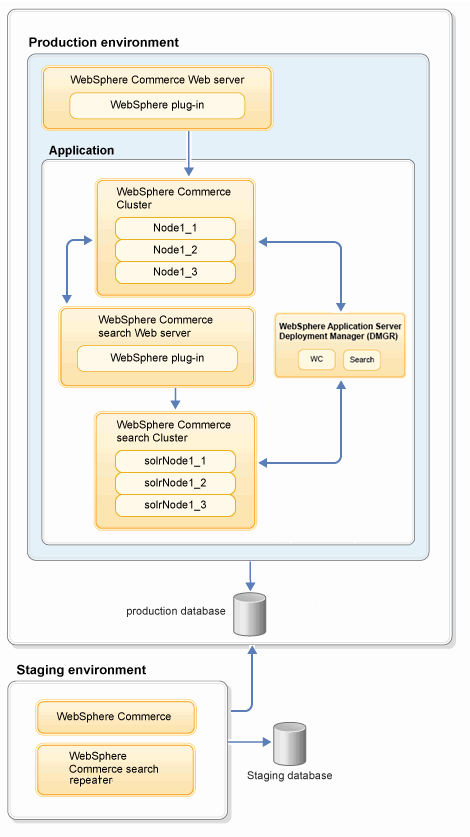
Configuring a cloned WebSphere Commerce environment
A cloned virtual environment creates a separate copy of the original web server, application server, and database. After you clone a WebSphere Commerce virtual environment, you need to configure the clone to differentiate from the original environment.
Cloning is recommended for temporary use only, such as for testing or debugging purposes. Do not
use clones in your production environment.
Note: Use this topic as a reference guide only.
- WebSphere Commerce does not support cloning virtual machines and recommends that you deploy environments by using the standard installation procedures. For more information, see Installing WebSphere Commerce.
- WebSphere Application Server (WAS) does not support cloning virtual machines that have WAS configuration profiles. For more information, see Support for Virtual Machine Clones in WebSphere Application Server .
Before you begin
About this task
- Operating system
- DB2 Database
- WebSphere Application Server
- IBM HTTP Server
- Web Server plug-in
- WebSphere Commerce
Note: This procedure was tested on a cloned virtual machine with a three-tier topology as
illustrated in the following diagram:

with the following set up:
- Red Hat Enterprise Linux
- IBM HTTP Server 7
- DB2 version 9.7
- WebSphere Application Server Version 7
- WebSphere Commerce Version 7 Feature Pack 8, Fix Pack 9
- Clustered WebSphere Commerce environment
- Clustered WebSphere Commerce search environment
- WebSphere Commerce and WebSphere Commerce search share the deployment manager
- Production environment contains Solr subordinates (slaves) only.
- Staging environment contains the Solr repeater.